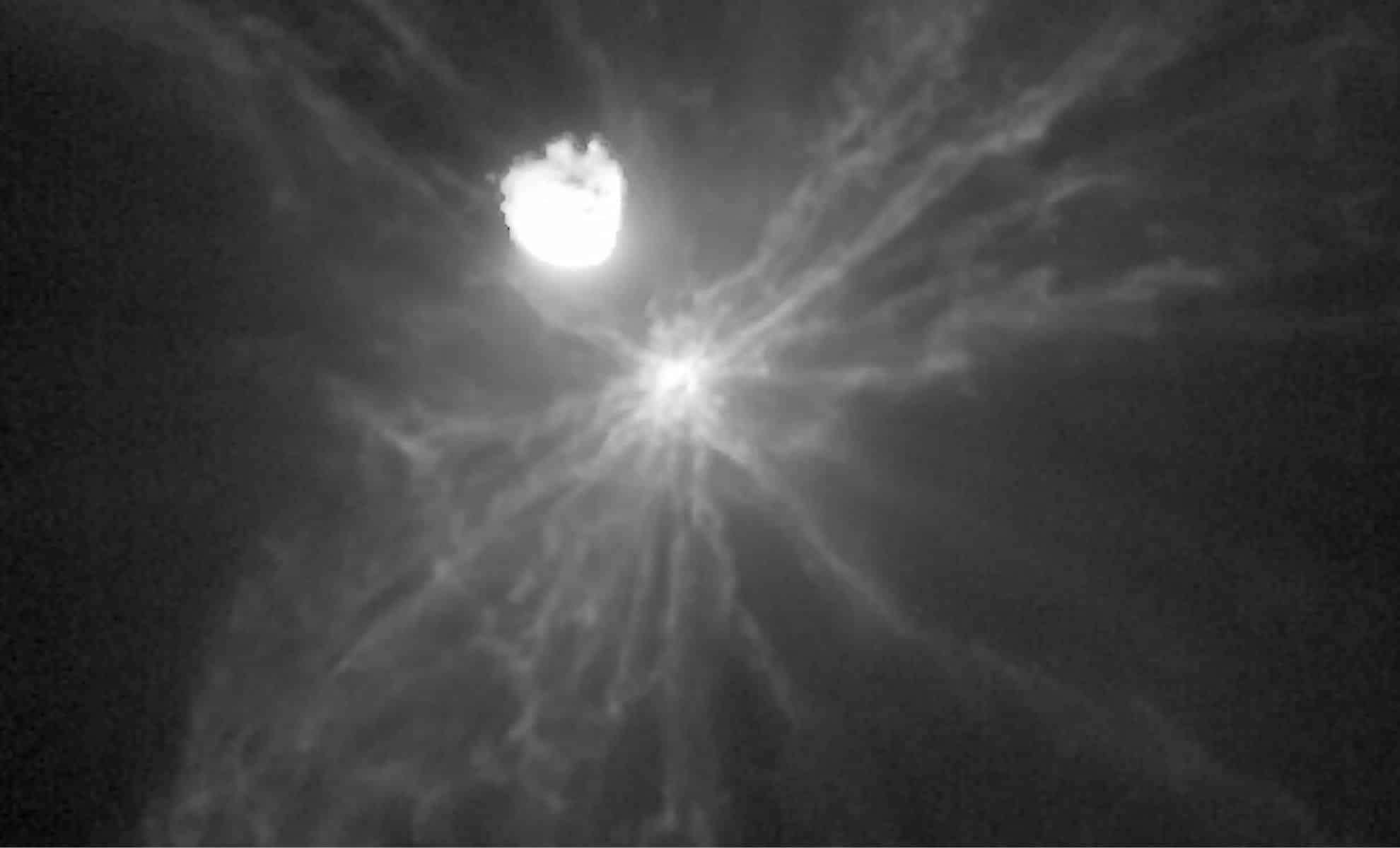DART Mission’s Ejected Boulders May Complicate Future Operations

When NASA’s DART spacecraft collided with the asteroid moon Dimorphos in 2022, it not only demonstrated the potential of a kinetic impactor to alter an asteroid’s orbit but also unleashed a surprising aftermath. The impact generated approximately 100 large boulders, some possessing more than three times the momentum of the spacecraft itself. This unexpected ejection of debris introduces new complexities that could hinder future planetary defense strategies, as revealed by a recent study led by a team from the University of Maryland.
Study Reveals Complex Ejecta Patterns
A study published in the Planetary Science Journal on July 4, 2025, highlights the intricate patterns formed by the boulders ejected during the DART mission. Researchers found that the boulders did not scatter randomly; instead, they clustered into two distinct groups. This clustering suggests the presence of unknown forces influencing their trajectories. Lead author Tony Farnham pointed out that the additional momentum, primarily perpendicular to the spacecraft’s path, may have altered Dimorphos’ orbit and introduced unpredictable rotational dynamics. The largest cluster of boulders, moving southward at shallow angles, likely originated from two larger surface boulders that were struck just before the main impact.
Impact of DART’s Unique Terrain
Second author Jessica Sunshine elaborated on the role of DART’s solar panels in shattering these larger boulders, named Atabaque and Bodhran. This fragmentation resulted in chaotic debris patterns that differ significantly from those observed during NASA’s earlier Deep Impact mission, which targeted a dustier surface and produced smoother ejecta. The rocky terrain of Dimorphos led to the formation of filamentary structures in the debris. These findings underscore the diverse nature of asteroid surfaces and how such variations can complicate the effectiveness of deflection techniques, posing challenges for mission planning.
Unaccounted Forces and Future Missions
The momentum transferred by the ejected debris has the potential to shift the asteroid’s orientation in space, a factor that previous models did not consider. If these forces remain unaccounted for, future missions may struggle to accurately hit their deflection targets. Sunshine emphasized the importance of recognizing these subtle forces, comparing future planetary defense efforts to “a cosmic pool game,” where a missed shot could have significant consequences for Earth.
Upcoming ESA Mission to Enhance Understanding
The European Space Agency’s Hera mission, scheduled for 2026 to the Didymos-Dimorphos system, aims to validate these findings and deepen our understanding of the physics behind the impact and subsequent boulder ejection. Farnham noted the necessity of gathering data from multiple perspectives, as indicated by the insights gained from the LICIACube satellite. With Hera’s assistance, researchers hope to refine their models, enhancing preparedness for potential asteroid threats in the future.
Observer Voice is the one stop site for National, International news, Sports, Editor’s Choice, Art/culture contents, Quotes and much more. We also cover historical contents. Historical contents includes World History, Indian History, and what happened today. The website also covers Entertainment across the India and World.
Follow Us on Twitter, Instagram, Facebook, & LinkedIn

